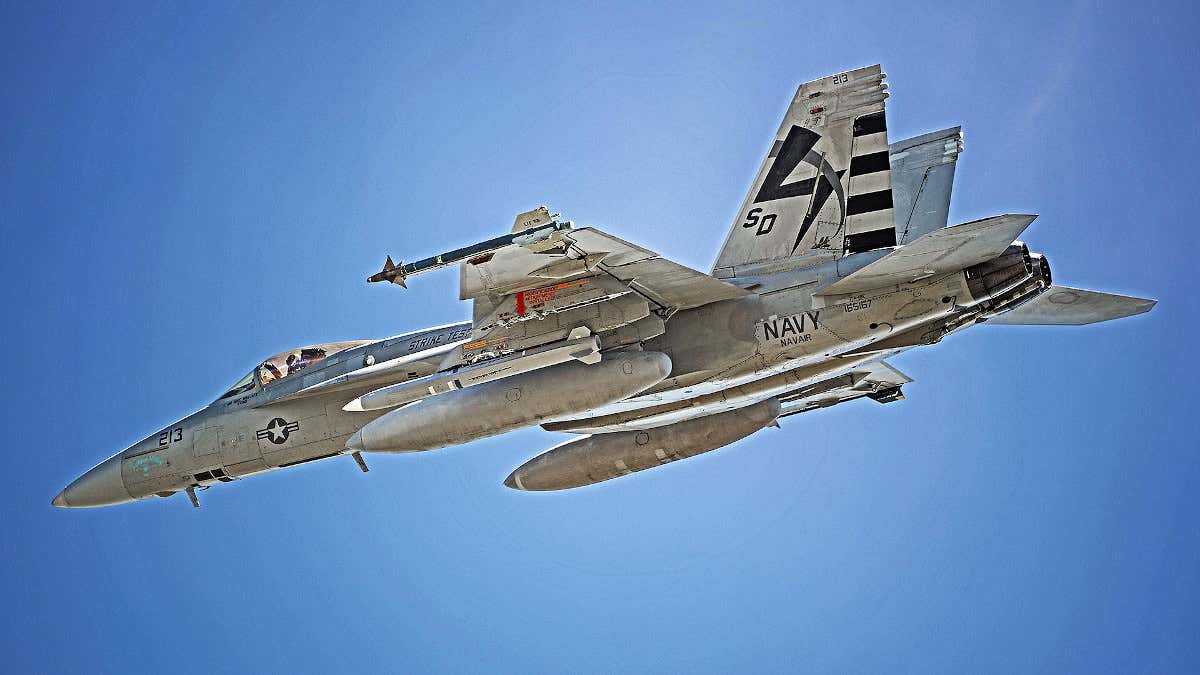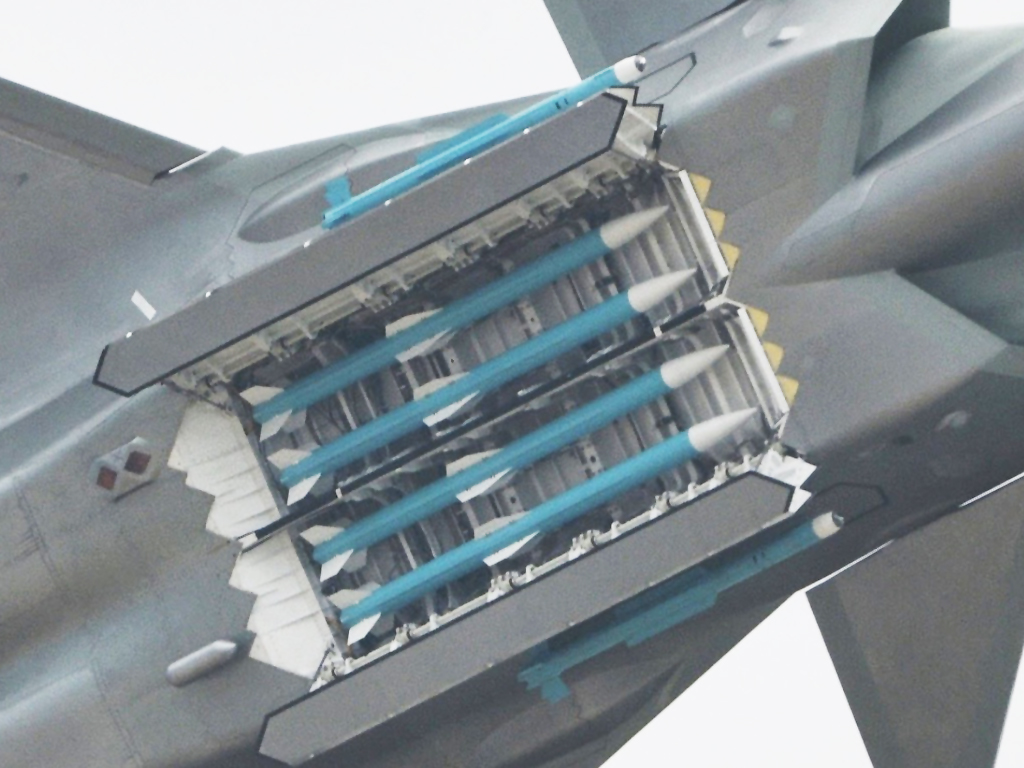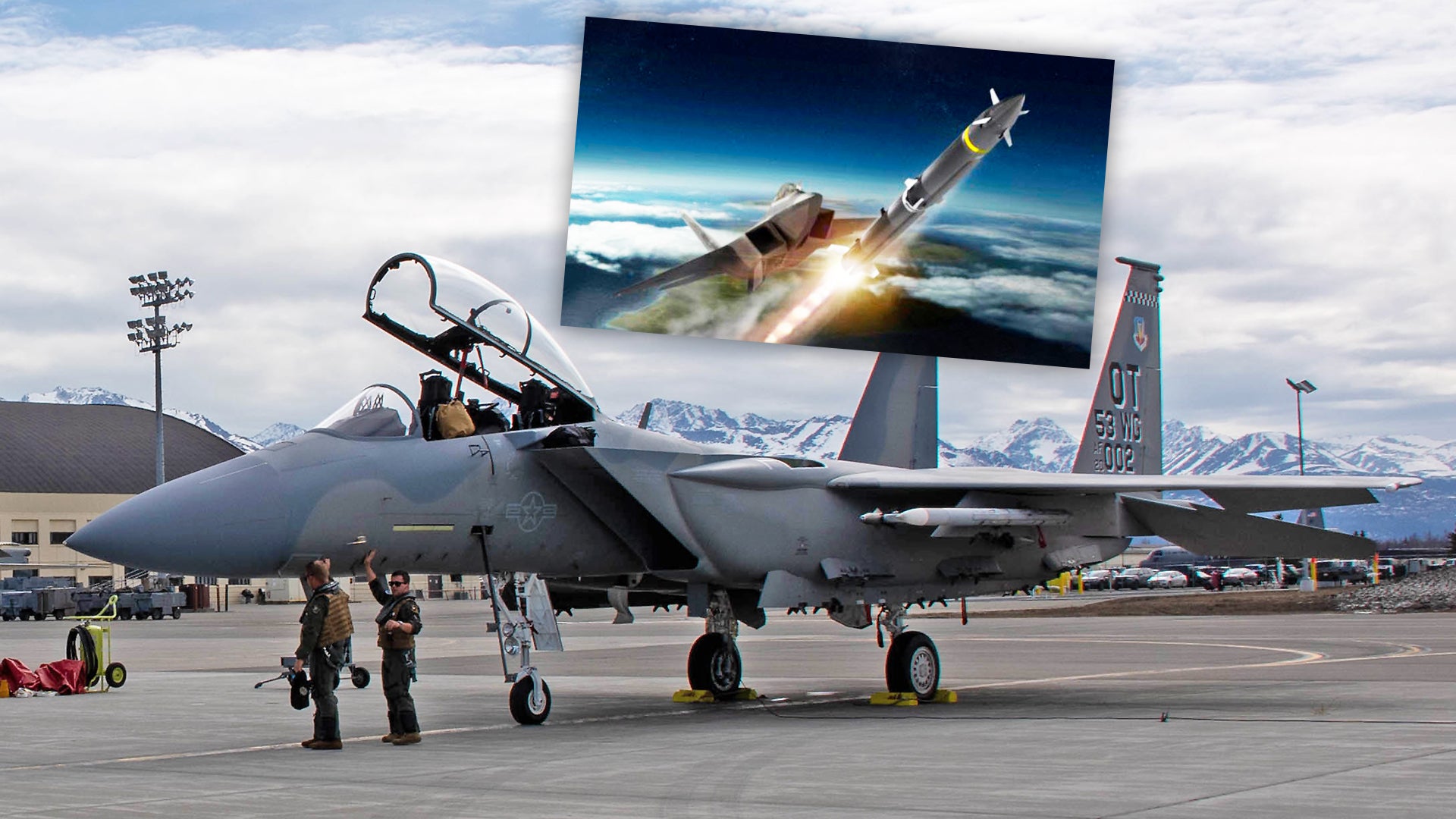The U.S. Air Force just dropped a big hint that it’s working on a new very long-range air-to-air missile, with the F-15EX Eagle II fighter jet earmarked as the most likely candidate to carry it. The development is the first we’ve heard about a new U.S. air-to-air missile (AAM) in this class since the emergence of the Long Range Engagement Weapon, or LREW, some years ago, followed by that weapon’s apparent disappearance — at least in the public domain.
Details about the new missile were disclosed by Air
Force Magazine which recently obtained a series of Air Force talking points for the Fiscal Year 2022 budget. These also talk more generally about the Air Force’s plans to retire over 400 older fighters and replace them with around 300 new aircraft, including the secretive Next Generation Air Dominance (NGAD) program and a ‘clean-sheet’ F-16 replacement, now called the Multi-Role fighter (MR-X).

Intriguingly, the talking points also make reference to an unnamed “outsize … air-to-air” weapon, which will be able to be carried by the F-15EX. The fighter is described in the same papers as “an outsized weapons truck.” To date, the largest air-to-air weapon associated with the F-15EX was the standard AIM-120 Advanced Medium-Range Air-to-Air Missile, or AMRAAM. While the Air Force has continued to try and wring out the maximum possible range from the AMRAAM, that weapon is now surely nearing the end of its development potential.
Previously, the ability of the F-15EX to carry outsized weapons was well known but it was always expected that these would be offensive air-to-ground weapons, including hypersonic missiles which are invariably larger than most regular air-launched missiles. In particular, the AGM-183A Air-launched Rapid Response Weapon, or ARRW, has been touted as a possible future armament option for the F-15EX.

Now, it seems, the F-15EX’s weapons carriage capability will likely see it hauling different types of standoff weapons to prosecute targets both on the ground and in the air. In both scenarios, the F-15EX would likely be operating in less-contested airspace, or just outside hostile anti-access and area denial (A2/AD) umbrellas.
Interestingly, while we know the Air Force, together with the Navy, is already working on a new AAM, which is intended to offer greater range than the current AIM-120 AMRAAM, the AIM-260 has long been assumed to be scaled to similar dimensions as the AMRAAM, especially as the F-22 Raptor is slated to be among the first aircraft to receive it. Having the AIM-260 broadly AMRAAM-sized would ensure it is suitable for internal carriage aboard the F-35 Lightning II, too, as well as any forthcoming stealth fighter designs. The AIM-260 is currently in development but details of its design and capabilities remain classified.
Aside from the AIM-260, there has been speculation in the past that the AGM-88G Advanced Anti-Radiation Guided Missile-Extended Range, or AARGM-ER, a radar-killing air-to-ground weapon, would make a suitable candidate to turn into a long-range AAM. Once again, however, that weapon has been sized from the outset to fit inside the weapons bays of the F-35A and the carrier-based F-35C.

Furthermore, by explicitly referring to the “outsize” nature of this new weapon, the Air Force would seem to be pointing to a different weapon altogether, one that Air
Force Magazine assesses as a planned counter to China’s PL-15 AAM.
The PL-15 also remains a mysterious weapon. We know that it is intended as the main armament of the J-20 stealth fighter and that it’s broadly analogous to the AIM-120D AMRAAM. However, there has been speculation in the past surrounding exactly how it achieves its presumed very long-range and whether it uses exotic throttleable ramjet propulsion. In fact, it now seems certain that the PL-15 uses a more conventional dual-pulse motor, but that its overall performance and its active electronically scanned array (AESA) radar still offer a serious challenge to the United States and its allies.

Meanwhile, China has at least been testing another very long-range AAM, photos of which showed it under the wing of a J-16 Flanker multirole fighter jet. This shadowy weapon is thought to be around 18 feet long, compared to 12 feet for the AMRAAM. In the past, The War Zone has speculated about how that weapon may in fact be tailored to destroy airborne early warning and control aircraft, and other high-value targets, at extended ranges.
These Chinese weapons have been under development for some time, as have several Russian counterparts, which pose another threat to the previous dominance of the AMRAAM family. Last year, we saw the first evidence of a test launch of the very long-range R-37M (AA-13 Axehead) from a Su-35S Flanker multirole fighter, while an extended-range version of the R-77 (AA-12 Adder), apparently with ramjet propulsion, also appeared to be under test aboard the Su-57 Felon stealth fighter.

These Chinese and Russian missiles have been known about for some time now — the R-37M was first tested from a MiG-31 Foxhound interceptor as long ago as 2011. This brings us back to the LREW program, which sought to provide the U.S. Air Force with a very long-range AAM to challenge designs like these and to reinstate a capability the Pentagon lost with the Navy’s retirement of the AIM-54 Phoenix in 2004.

Back in late 2017 the National Defense Authorization Act, the Pentagon’s budget, for the following year made reference to the LREW program, which was classed as “emerging capabilities technology development.”
Back then, The War Zone described LREW as follows:
This program has worked as an exploratory initiative used to identify the overall concept, technologies, kill chain structure, and baseline requirements for a new long-range air-to-air missile or family of missiles. Officially the program is aimed at “maintaining America’s air dominance.” Now the classified results of the program are supposedly being funneled down to the services where they are likely to morph into a hardware development program of record.
Concept art provided for LREW showed a two-stage missile design being launched from the weapons bay of an F-22. A two-stage weapon would be a logical solution to developing a very long-range AAM rapidly, but the fact that the missile was apparently scaled for internal carriage by the Raptor raises some questions.

While that concept may have involved some artistic license, the unnamed missile mentioned in the recent Air Force sounds very much as if it would be too large for internal carriage. It is possible, perhaps that LREW eventually yielded a missile that was too big for accommodation in the F-22’s main weapons bay. Taken together, however, it suggests that the new weapon is either separate from the LREW program, or the latter has since morphed into a different kind of weapon and one that is larger than when originally conceived.
Moreover, since LREW was first disclosed, the idea of using the F-15 (in particular) as a ‘weapons truck’ has gained much greater traction, including using the older fighter to launch long-range missiles from a position of relative safety well behind a flight of stealth fighters which could provide targeting for these weapons via datalink. With the missile being launched remotely by the F-15, and then fed targeting updates from low-observable assets via datalink, the value of having the weapon launched by the stealth fighter itself becomes more questionable.

There are perhaps other clues in the Air Force’s budget talking points as to how the new missile might be utilized. These make reference to “full-spectrum survivability, high speed, advanced weapons, and extended ranges” as well as a concept of operations in which the Air Force seeks to achieve “temporary windows of superiority” in “highly-contested threat environments.” One can quite easily imagine a very long-range AAM launched from distance and cued by various offboard, primarily stealthy platforms, as a way of punching holes in a dense A2/AD environment such as the kind that would be found during a campaign fought over Taiwan, for instance.
Aside from the F-15EX, there is also the possibility that the new missile could also be compatible with the dimensions of the weapons bays of the B-21 Raider stealth bomber. In 2019, Air Force Major General Scott Pleus, the then Director of Air and Cyber Operations for Pacific Air Forces, talked about the possibility of “A B-21 that also has air-to-air capabilities” and can “work with the family of systems to defend itself, utilizing stealth.”
Regardless, with the F-15EX now making rapid progress, we might not have to wait too long to find out more details about the Air Force’s next-generation very long-range AAM. Whatever that weapon turns out to be, it’s been a long time coming and, with Chinese and Russian missile developments continuing apace, it will likely be a much-needed addition to the service’s armory.
Contact the author: thomas@thedrive.com
